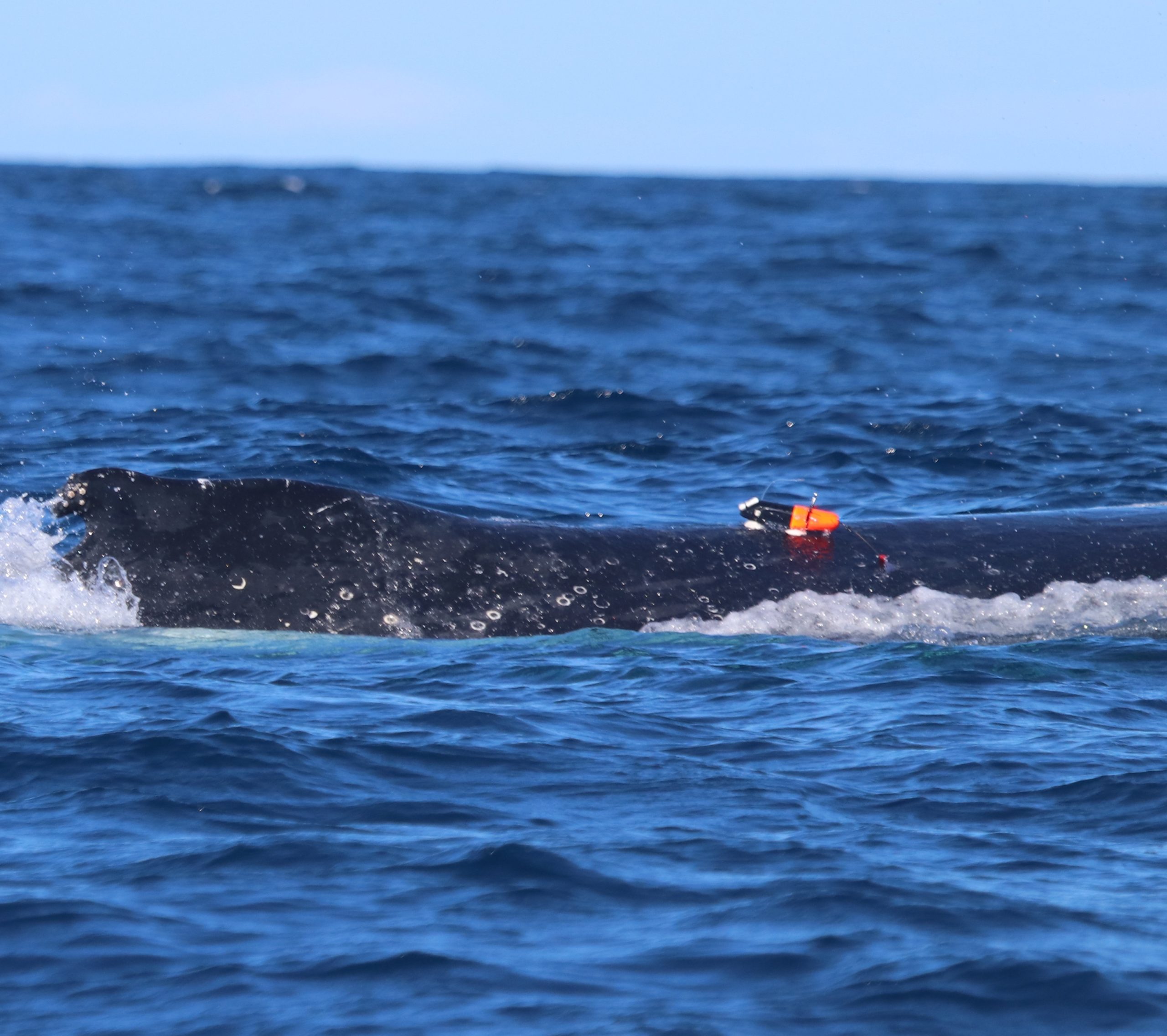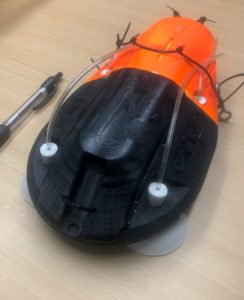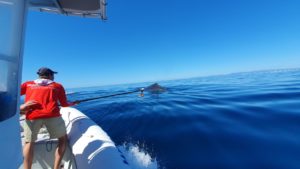
A world–first trial of tracking migrating humpback whales using a novel method has been successful and paved the way for less invasive devices to be deployed in future tracking studies.

Dr Olaf Meynecke from Griffith University's Coastal and Marine Research Centre (CMRC) led the study, which has been published in Journal of Marine Science and Engineering.
Using a CATS (Customised Animal Tracking Solutions) suction cup tag, which temporarily adheres to the whale's skin, Dr Meynecke was able to deploy the tags in the Gold Coast bay regions and track the whales in real time using Global Positioning System/Global Systems for Mobile Communication (GPS/GSM).
During the two deployments – one on a suspected male and another on a female humpback whale – the tags provided location points with relatively high accuracy for both individuals albeit different swim behaviour and surface intervals.
In combination with an integrated archival data logger, the tag also provided detailed information on fine–scale habitat use, such as dive profiles.
"Using a GPS/GSM module on whales commonly used for fleet tracking is a first and it's a method that has a lot of potential," he said.
"Normally, satellite relay tags are used to transmit location data, simply because they work in remote locations but they are very expensive. However, because migrating whales stay close to shore most of the time, our tag works well.
"These tags are a more cost-effective method and capture more data locations and data points over time. The principle is the same as other suction cup tags – the tag sucks onto the whale's skin and just falls off. The whales don't seem to notice them at all."
Suction cup tags do not have to penetrate the animals' skin and can be used for short–term deployments (hours to days), which make them applicable for fine-scale habitat use studies such as this, which investigated movements within the range of metres to kilometres.

The tags measured about 20cm long and 10cm wide, were specially designed in a hydrodynamic shape for minimal resistance, and were watertight and pressure safe to several hundred metres.
Dr Meynecke said information on fine-scale habitat use of cetaceans (aquatic mammals) could provide important insights into habitat preferences and sensitivity to environmental drivers (hydrodynamics, temperature gradients, salinity, bathymetry) as well as anthropogenic impacts.
"Ideally for future studies we would like to modify the tag so that the antennae is out of the water enough to transmit after the tag comes off the whale, and extend the tagging time and focus on resting whales in the bays to study their behaviour further," he said.
The study 'Asset Tracking Whales – First Deployment of a Custom-Made GPS/GSM Suction Cup Tag on Migrating Humpback Whales' has been published in Journal of Marine Science and Engineering.






